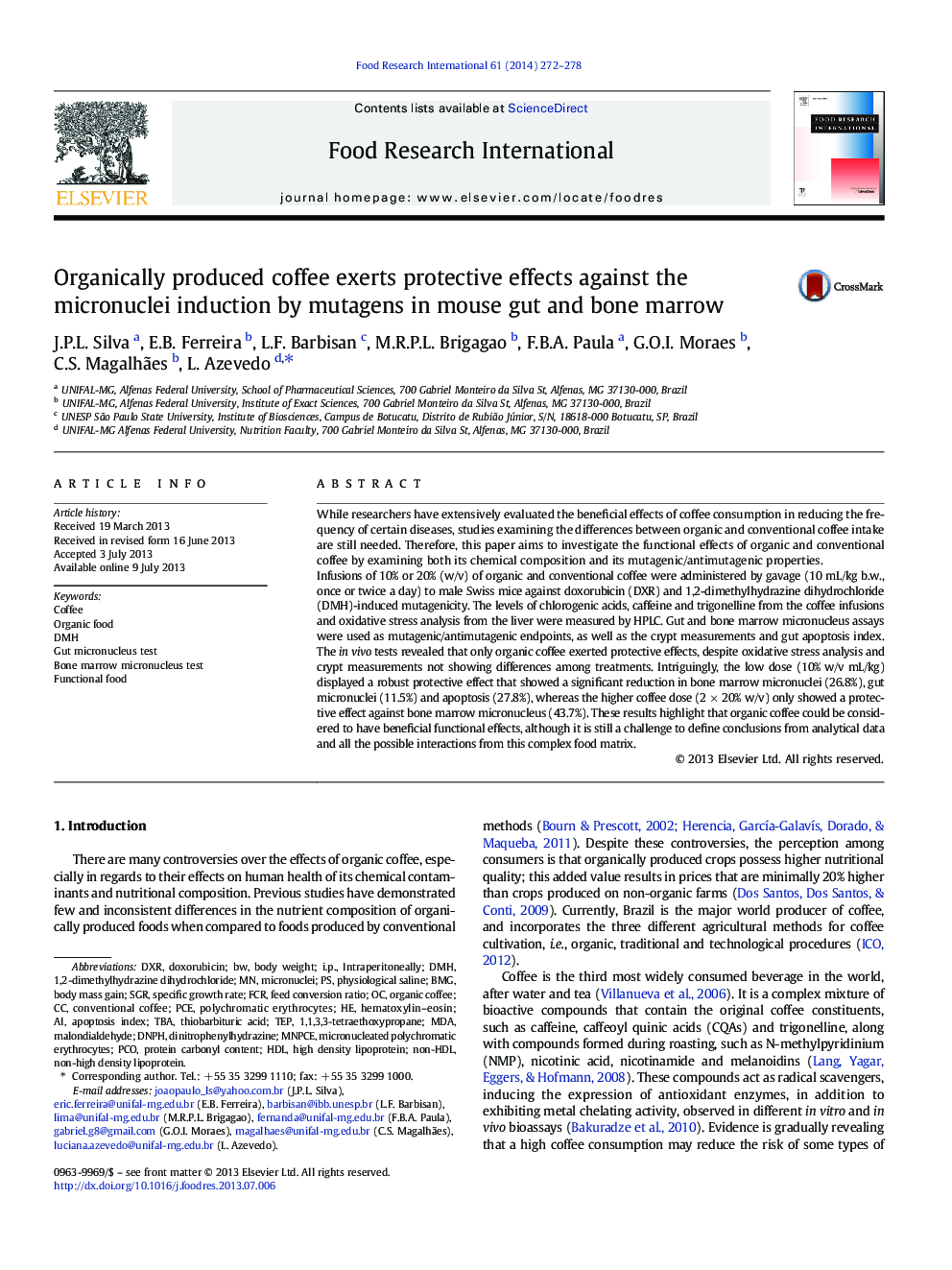| Article ID | Journal | Published Year | Pages | File Type |
|---|---|---|---|---|
| 6396446 | Food Research International | 2014 | 7 Pages |
â¢The functional compounds were equal between organic and conventional coffee.â¢Only organic coffee exerted protective effect against mutagens administered in vivo.â¢Lower dose (10%) of organic coffee displayed a more robust protective effects.â¢The organic coffee could be considered to have beneficial functional effects.â¢Matrix coffee interactions may be associated to its protective effects.
While researchers have extensively evaluated the beneficial effects of coffee consumption in reducing the frequency of certain diseases, studies examining the differences between organic and conventional coffee intake are still needed. Therefore, this paper aims to investigate the functional effects of organic and conventional coffee by examining both its chemical composition and its mutagenic/antimutagenic properties.Infusions of 10% or 20% (w/v) of organic and conventional coffee were administered by gavage (10 mL/kg b.w., once or twice a day) to male Swiss mice against doxorubicin (DXR) and 1,2-dimethylhydrazine dihydrochloride (DMH)-induced mutagenicity. The levels of chlorogenic acids, caffeine and trigonelline from the coffee infusions and oxidative stress analysis from the liver were measured by HPLC. Gut and bone marrow micronucleus assays were used as mutagenic/antimutagenic endpoints, as well as the crypt measurements and gut apoptosis index. The in vivo tests revealed that only organic coffee exerted protective effects, despite oxidative stress analysis and crypt measurements not showing differences among treatments. Intriguingly, the low dose (10% w/v mL/kg) displayed a robust protective effect that showed a significant reduction in bone marrow micronuclei (26.8%), gut micronuclei (11.5%) and apoptosis (27.8%), whereas the higher coffee dose (2 Ã 20% w/v) only showed a protective effect against bone marrow micronucleus (43.7%). These results highlight that organic coffee could be considered to have beneficial functional effects, although it is still a challenge to define conclusions from analytical data and all the possible interactions from this complex food matrix.
